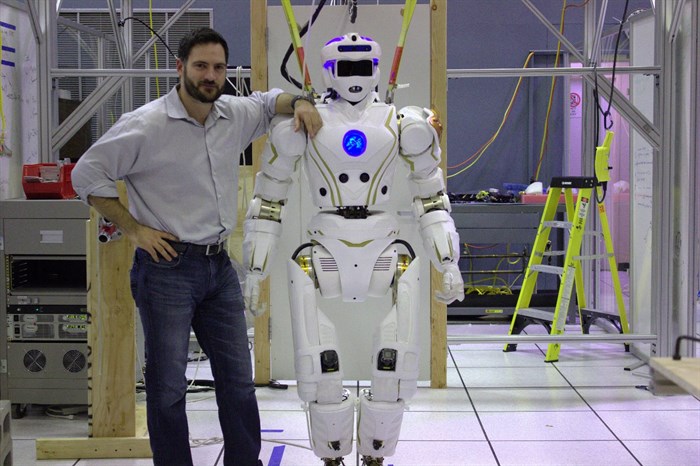Discovery Channel Canada recently featured on its popular show, Daily Planet, research on Bipedal Robotic Locomotion carried out at the AMBER Lab led by Dr. Aaron Ames.
AMBER Lab, an acronym for A&M Bipedal Experimental Robotics Lab, was established by Dr. Ames in the Mechanical Engineering Department at Texas A&M University in 2008. Amber Lab focuses on theoretical and experimental research in bipedal robotics, locomotion, nonlinear and hybrid systems, and prosthetic design.
Watch the video of the Amber Lab feature on Daily Planet here:
Dr. Ames uses human data as the fundamental basis for achieving ‘human-inspired’ locomotion in bipedal robots. The human data is derived from motion capture of people walking and navigating different environments. This data is analyzed to extract essential information about walking in terms of universal mathematical functions and algorithms defining bipedal locomotion. These functions become the basis of controllers for bipedal robots, and the result is strikingly human-like walking gaits with the ability to navigate through disturbances in the environment.
AMBER lab has custom built two bipedal robots, AMBER 1 and AMBER 2, and is testing ideas on the NAO robot. The team also is working on a project with NASA JSC at Houston, providing algorithms for the locomotion, mobility and full-body coordination of Valkyrie, NASA’s highly advanced, full-sized humanoid robot. AMBER Lab also is collaborating with SRI on a next generation humanoid robot, Proxi, with the goal of achieving efficient and robust locomotion.

The AMBER Lab team with AMBER 2

Dr. Ames with NASA’s Valkyrie Robot that walks with the help of algorithms provided by AMBER Lab
Dr. Ames describes walking as ‘controlled falling,’ because humans propel themselves forward to the point at which they are about to fall, but catch themselves and avoid the fall as their legs gain contact with the ground. Inspired by the simplicity and elegance of human locomotion, Dr. Ames’s team continues to refine the locomotive capabilities of bipedal robots and to improve their stability. The next step in the Amber Lab research is working on algorithms that will direct the robot to climb stairs and navigate uneven and unknown terrain.
There are many potential and highly useful applications of bipedal robotic locomotion. These robots can traverse where wheeled robots cannot, such as in areas of uneven terrain like polar ice caps, craters, or rubble-strewn sites in disaster zones, and can assist in discovery and rescue missions. Another important application of this research is prosthetic design, which could have a huge positive impact in the lives of people who have lost one or both their legs by enabling them to carry out movements and functions in an intuitive human-like manner.
The research of Dr. Ames and AMBER Lab has carried robotic engineering and controls to higher levels and continues to show promise of even greater refinement in the future. The Department of Mechanical Engineering is extremely proud to have Dr. Ames on its team of highly illustrious professors to guide Aggie Mechanical Engineers toward making new breakthroughs in engineering research.